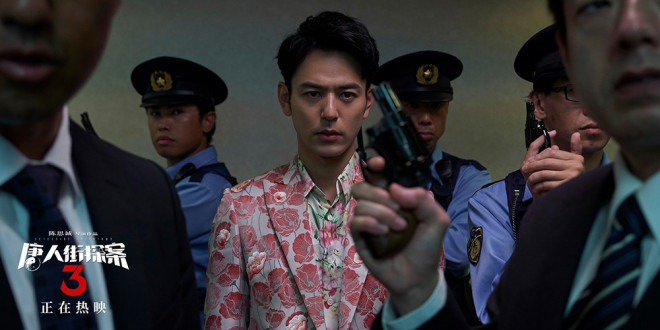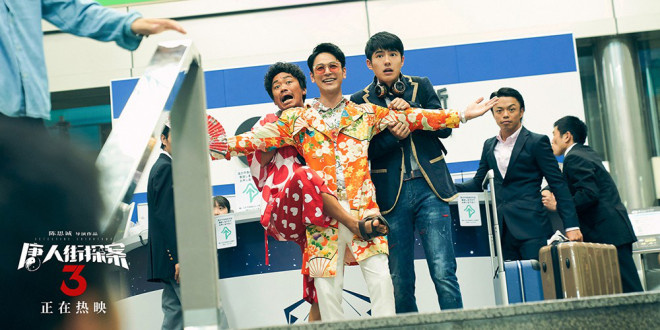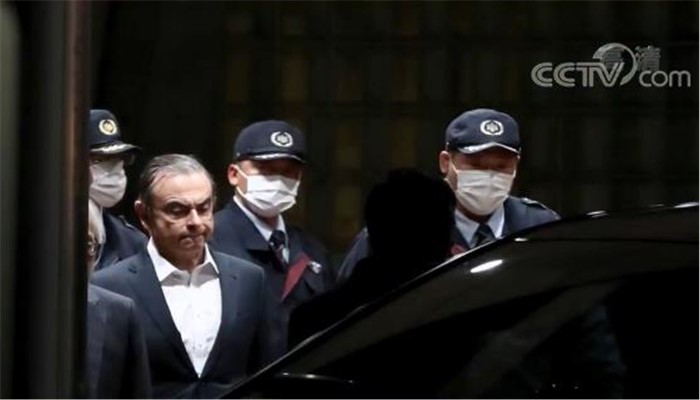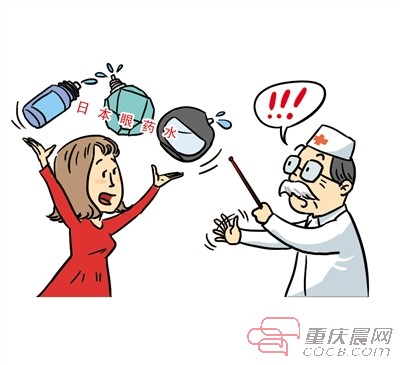
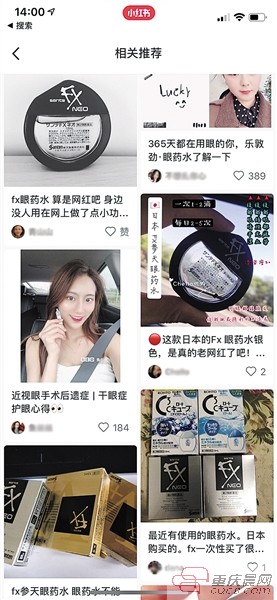
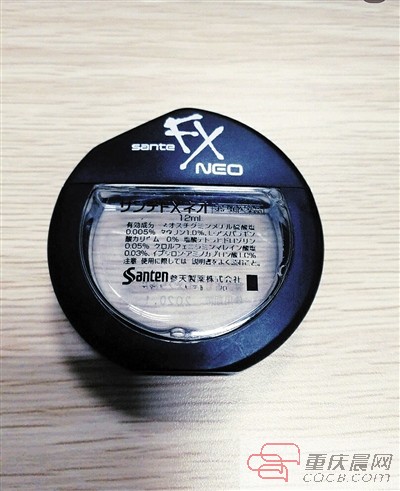
Many young people have experienced traveling abroad to help their friends buy local goods, but Cao Yan, who has just returned from a trip to Japan, is a little uneasy, and the problem lies in a few bottles of eye drops that her friend asked her to bring. "My mother also quarreled with me about this matter, saying that I am responsible for people’s use problems."
She buys eye drops.
Two of the three kinds were on the news of "no sale"
Yesterday, it was the third day that Xiao Cao, who lives in Jiaochangkou, Yuzhong District, returned to Chongqing from Japan. On this trip, Xiao Cao, like many young people, became a "purchasing agent" and helped many relatives and friends buy back local goods from Japan. These things were filled with a suitcase.
Most of the things purchased are Japanese cosmetics and skin care products. Although all of them have been mailed out, Xiao Cao and his mother are still a little embarrassed about some of them. "It’s just a few bottles of eye drops, which is only tens of dollars, mainly because my mother is afraid of safety problems."
Xiao Cao recalled that during this trip to Japan, there were seven or eight friends who asked her to buy eye drops, all of whom were young people, and the eye drops she bought were also online celebrity products. "They were concentrated in three brands, a silver FX model, a PC, and a Japanese eye drop made in Letun." This shopping trip went smoothly. Xiao Cao bought these eye drops that his friends needed the next day when he went to Japan.
Just as the family continued to travel, Xiao Cao’s mother found out in her mobile phone that two of the eye drops appeared in the news that they were banned in foreign countries. "I was curious at that time and wanted to know what eye drops were so good that I had to buy them abroad. I didn’t expect to find out that there was a problem." What Xiao Cao’s mother didn’t expect was that all the news about the ban mentioned that the reason for the ban was "may bring serious health risks". To this end, Xiao Cao and his mother had a disagreement. My mother thought that eye drops should not continue to be brought to friends, because Xiao Cao would "take risks", but Xiao Cao felt that it was no big deal. "I used two or three bottles myself, and I didn’t think there was a problem, and how risky an eye drop could be!"
Be sought after in China
E-commerce platform sells well, and the ingredients contained are not mentioned.
The reporter inquired about relevant reports. It turned out that the FX eye drops and PC eye drops that Xiao Cao was asked to purchase were removed from the shelves in Health Canada a month ago, and it was forbidden to sell them online. It is worth noting that these two kinds of eye drops are all from Japanese Shentian Pharmaceutical, and FX eye drops also have a gold package, which is also banned.
The reporter then inquired about the above two kinds of eye drops on several domestic e-commerce platforms and found that they were sold on all major platforms, and the sales volume was not small. On Taobao, the monthly sales of FX eye drops on many platforms are tens of thousands. "Removing red blood" and "refreshing eyes" are the effects of eye drops mentioned by various stores, but most stores do not mention what ingredients are contained in eye drops on the sales page.
On another product recommendation APP, the word "eye drops" was entered, and the most frequently appeared articles about eye drops in online celebrity, Japan, with thousands of articles. Among these recommendations, the most effective is "relieving eye fatigue", but few articles mention the ingredients that may cause harm in eye drops.
The public is not at ease.
The news of the ban on sales came out, and sales were not affected.
Miss Tang, who studied in Japan from Chongqing, said that FX eye drops and PC eye drops have been very popular with the public since 2017. "People have been looking for me to buy them, even after the news of the sale ban came out, and the sales volume has not been affected."
Miss Tang said that she is also a loyal audience of FX eye drops. "It’s very cool after clicking in, and it really feels very moist." Miss Tang and some friends who asked her to buy the dangerous ingredients mentioned by the Canadian health department didn’t think it was a big deal. "This eye drop is also used by many people in Japan, and everyone is fine."
Expert reminder
The ingredients in eye drops are complicated.
Long-term use may lead to glaucoma.
According to Qi Jian, an ophthalmologist in the First Affiliated Hospital of Chongqing Medical University, these online celebrity eye drops contain neostigmine methyl sulfate and tetrahydrozoline. Among them, tetrahydrozoline is the main component of eye drops, which belongs to adrenaline drugs, and has a slight pupil dilation effect. Young people and people without glaucoma constitution have no obvious adverse consequences, but for some elderly people who may have glaucoma constitution, long-term use of this kind of drugs may lead to potential risks of glaucoma and may seriously damage visual function.
What is more noteworthy is that the composition of "Neostigmine" contained in eye drops is prohibited for people suffering from epilepsy, angina pectoris, urinary tract obstruction and bronchial asthma. Although the content of this ingredient in eye drops is very low, it is enough to cause serious harm to some sensitive patients, because the eye drops will enter the nasal mucosa and eventually enter the blood system, and there will be corresponding risks if there is this ingredient.
According to Xiao Cao and Miss Tang’s statement that eye drops are cool and comfortable after dripping, and they are very effective in eliminating red blood, Qi Jian reminds that it is not surprising that eye drops have the functions of "cooling" and "eliminating envy". Tetrazoline has the function of constricting blood vessels, which can relieve the symptoms of eye congestion caused by allergies and inflammation, so the envy will disappear immediately after dripping, but this effect is temporary, not permanent.
Many people frequently use eye drops because of this temporary feeling of redness and coolness, but the real cause of eye fatigue and dryness has not been solved. Long-term dripping may also cause dry eye, causing punctate keratopathy and even keratitis. Chongqing morning post upstream journalist Shi Heng
related news
▲
Experts who are prone to pink eye disease in summer teach you how to prevent it.
Is there a geographical difference in suffering from eye diseases? Don’t believe it, Chongqing people are prone to pink eye. June 6th is the 24th National Eye-Love Day. Professor Bai Ji, a famous ophthalmologist, was invited to enter Jinqiao Community in Liangjiang New District to give a public lecture on "Prevention and Treatment of Myopia" to residents.
The activity organized by Liangjiang New Area is based on the theme of "Take care of children’s eye health together and let them have a bright future", which attracted more than 100 people from nearby residents, students, teachers and so on.
Looking at mobile phones for a long time is prone to dry eye.
Bai Ji gave a detailed and vivid explanation on how to prevent eye diseases scientifically. "Pay attention to eye hygiene and ensure adequate sleep time, not less than 10 hours a day; We must persist in doing eye exercises seriously; Or be picky about food; Not playing computer and watching TV for a long time; Take an active part in physical exercise; Reading and writing posture is correct, etc. "
In view of the fact that modern people are exposed to a large number of electronic products every day, they are prone to eye discomfort. Bai Ji believes that this is due to long-term use of eyes, which leads to eye fatigue and dryness. It is medically called dry eye syndrome, also known as keratoconjunctivitis xerosis.
Common symptoms include dry eyes, easy fatigue, itchy eyes, foreign body sensation and sensitivity to external stimuli. In severe cases, the eyes will be red, swollen, keratinized, and the corneal epithelium will be broken and there will be silk adhesion. This kind of injury can cause keratoconjunctival lesions and affect vision for a long time.
Bai Ji introduced that dry eye is a chronic disease that needs long-term treatment, but you can eat more foods containing vitamin A in your life, such as milk and eggs. The most important thing is to strictly control the time of contact with electronic products, and not to play with mobile phones, tablets and other products for a long time.
People in Chongqing are susceptible to pinkeye in summer.
In addition, Bai Ji also said that Chongqing has high temperature and heavy humidity, and citizens love swimming, so it is easy to get pink eye in summer, which is called acute conjunctivitis in medicine.
He introduced to the residents and friends, "The causes of conjunctivitis can be divided into infectious and non-infectious categories according to their different properties. Infectious is conjunctival inflammation caused by pathogenic microorganism infection, while non-infectious is allergic inflammation caused by local or systemic allergic reaction. External physical and chemical factors, such as light and various chemicals, can also become pathogenic factors. "
"Conjunctivitis is mostly contagious. It is recommended to wash your hands frequently and avoid rubbing your eyes at will. Advocate running water to wash your face, towels, handkerchiefs and other items should be separated from others, and often cleaned and disinfected, boiled with boiling water. After swimming, drop a little antibiotic eye drops. "
At yesterday’s event site, the organizers also publicized the harm and prevention knowledge of myopia to residents by hanging banners, distributing promotional materials, placing publicity panels and conducting public welfare lectures on prevention and treatment of myopia.
Chongqing morning post Upstream Journalist Yang Ye Intern Li Shengrong
